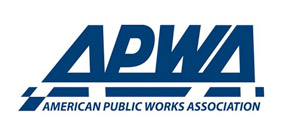Dunwoody Pavement Management Program replaces all streets on 20-year cycle

The City of Dunwoody, Ga., is taking it to the streets – literally. On April 8, the Atlanta suburb embarked on its 2025 paving plan, which includes 29 streets and covers over 10 lane miles. The project is funded with $2.75 million from Special Purpose Local Options Sales Tax funds as well as $503,414 from the Georgia Department of Transportation through a Local Maintenance and Improvement Grant.
Located in DeKalb County, Dunwoody was officially incorporated on Dec. 1, 2008, but its roots go back to the 1830s. The community boasts a population of 51,683 across 13.2 square miles and is bounded by the Fulton County line on the north and west, I-285 on the South, the Peachtree Industrial Boulevard on the southeast, and the Gwinnett County line on the Northeast. The city has its own police force with approximately 64 officers as well as departments governing zoning and land use; however, Dunwoody receives some of its services from DeKalb County, including schools, fire and rescue, sanitation, water, and sewage.
Creating a plan
According to Dunwoody Public Works director Michael Smith, the 2025 pavement resurfacing project originated from the city’s Pavement Management Program, which assesses the condition of all city-maintained streets on a five-year basis. The assessment is then used to prioritize the streets in need of repaving in order to maximize the benefit gained from rehabilitation, depending on where the street is on the life cycle curve.

“The goal is to apply the right treatment to the right street at the right time,” he said.
The pavement assessment completed two years ago was the fourth such assessment since the city started its pavement management program 15 years ago. Two of the key metrics that the city uses to evaluate the pavement condition system wide is the pavement condition index and the percentage of backlog. The PCI score is determined on a scale of 0-100, with 100 being the highest, and on the amount of pavement cracking, rough ride and other factors. The backlog is the percentage of pavement area that is in poor or worse condition based on the PCI score.
“When Dunwoody started its pavement management program in 2010, the overall PCI score was 69 with a 16% backlog,” Smith said. “In 2023, the PCI score was 75 while the backlog held steady at 17%. The goal of Dunwoody’s pavement program is to keep the PCI score above 70 with a backlog around 15%.”
A concrete system
When Dunwoody began its pavement management program in 2010, the city council set a goal of paving all the city streets within 20 years and, according to Smith, the city is on track to meet that goal. Going forward, he said, the goal is to continue paving all local neighborhood streets on a 20-year cycle with the heavily traveled, arterial and collector streets being repaved more frequently.
By the end of last year, the city had finished paving 252 lane miles, or approximately 83% of the streets that it maintains.
Smith said that the streets scheduled for pavement this year are centered on the Ashford Chase and Dunwoody North neighborhoods as well as the north end of Tilly Mill Road. Crack ceiling work is being planned for parts of Dunwoody Park, Hammond Drive and Perimeter Center Parkway. Additional patchwork will take place on parts of Peachford Road and Tilly Mill Road.
Smith suggested that cities looking to create a comprehensive pavement cycle begin with an assessment of the street system, which is objective and quantifiable, and then set targets for pavement condition based on the community’s expected level of service. “With a condition assessment and service level targets, you can determine what level of funding is needed every year in order to achieve the goals of the program,” he said.
Next Article: Combatting the affordable housing crisis




